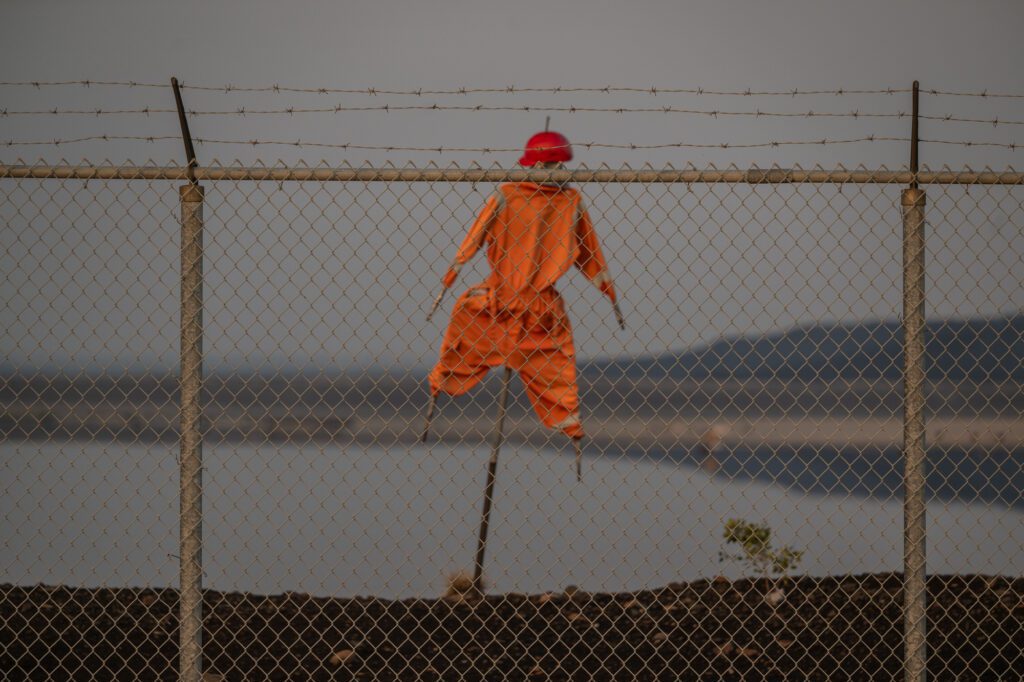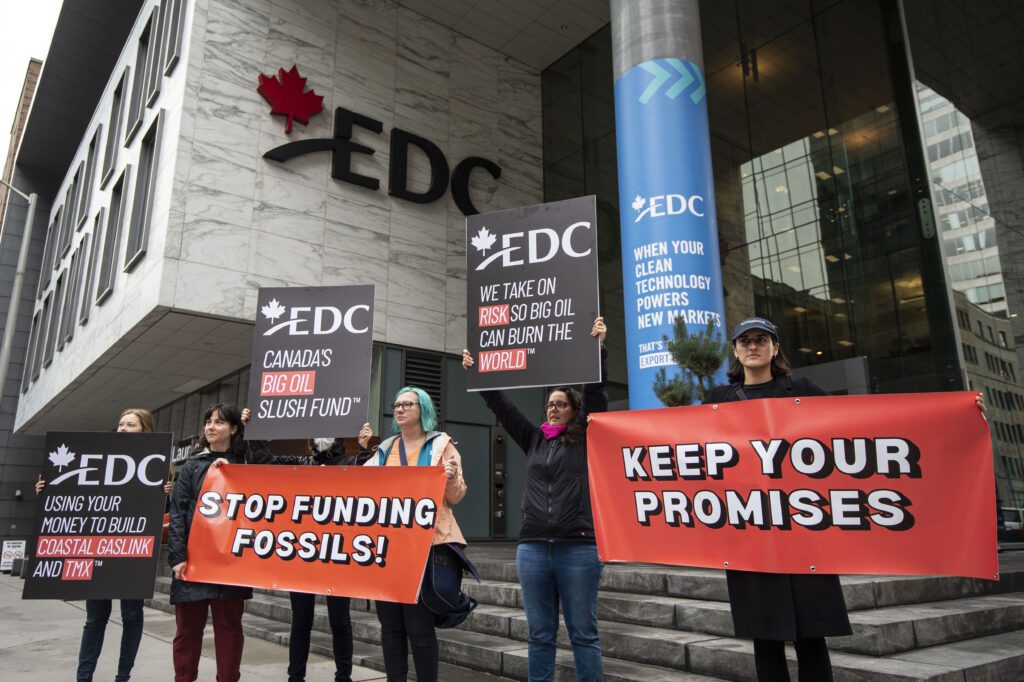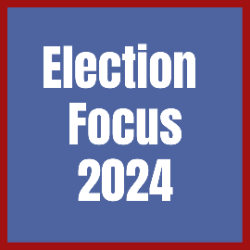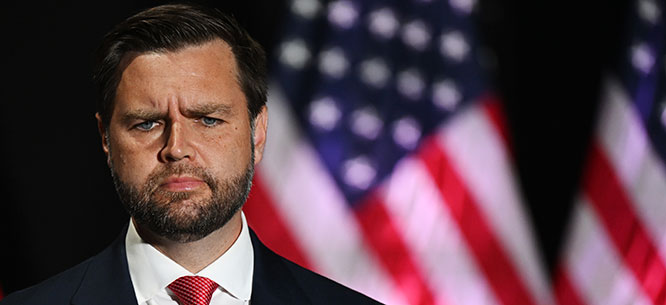This post was originally published on American Jewish World Service – AJWS.
-
“We always start with a question — that’s where everything begins,” says Himalini Varma, the director of AJWS grantee Thoughtshop Foundation. Her organization, co-led with her partner Santayan Sangupta in 1993, has transformed the lives of thousands of young women across West Bengal, India, by approaching change through this lens: opening up space to …
-

Have you ever wondered why progress on climate change is so slow despite widespread public support for climate action? How often does the fossil fuel industry try to influence the government’s climate policy decisions? Maybe you’ve even been curious about if Big Oil has lobbied the Member of Parliament representing your community.
If any of these questions have ever crossed your mind, then I have great news for you!

Figure 1 Top Ten Oil and Gas Company Lobbyists Environmental Defence Canada has just released a new report called Big Oil’s Big Year: A Summary of Big Oil’s 2023 Federal Lobbying that digs into it all. The report finds that oil and gas companies and industry associations try to influence the government through persistent lobbying. In 2023, they had at least 1,255 lobby meetings with the federal government, which is the equivalent of meeting nearly five times per workday. Big Oil primarily targets the ministers and ministries responsible for climate policy.
The report compiles data from the Federal Registry of Lobbyists. It highlights the most active fossil fuel companies and industry associations, as well as the ministries and ministers most targeted for lobbying. Additional findings include these key takeaways:
- The federal ministries most frequently targeted by lobbyists were Natural Resources Canada (NRCan), Environment and Climate Change Canada (ECCC), and Finance Canada (FIN).
- NRCan staff participated in at least 313 meetings with oil and gas lobbyists, including 34 with Minister of Energy and Natural Resources Jonathan Wilkinson present.
- ECCC staff participated in 253 meetings, including 12 with Environment and Climate Change Minister Steven Guiltbeault present.
- Finance Canada staff participated in 118 meetings.
- Oil and gas companies and industry associations lobbied various Members of Parliament 410 times.
- Industry associations were two of the top three most active fossil fuel lobbyists in 2023, with the Pathways Alliance registering 104 meetings and the Canadian Association of Petroleum Producers registering 91.

Figure 2: Top five Industry Associations lobbyist
While the relentless nature of the fossil fuel industry’s lobbying is astounding, we know this is just the tip of the iceberg. These figures do not capture the entire extent of the industry’s access, given that the data only includes meetings initiated by the companies that meet the requirements for lobby reporting and not meetings set up by the government.
More scandalous still, new investigative research revealed the lengths these corporate lobbyists are willing to go to try and push the government into line with fossil fuel interests. The Narwhal recently exposed a leaked recording of a lobbyist working for TC Energy, the company responsible for projects such as the Coastal GasLink Pipeline and Keystone XL pipeline. The lobbyist, who has now resigned, was giving a presentation instructing a group on how to sway the government. He described having people bump into politicians outside of work to blend the personal and professional, drafting proposed policies that they give to “underpaid and overworked” government staffers to submit as briefing notes on government letterhead, and even working to influence Canadian ambassadors abroad to deliver pro-fossil fuel industry messages to politicians. This is just one story in the fossil fuel industry’s decades-long effort to ensure they have the ear of politicians from all parties and at all levels of government across the country.
Whether it’s delaying climate policy, carving out loopholes in regulations, or asking for government handouts, Big Oil lobbying is obstructing climate action. Their emissions are polluting our planet, and their corporate influence is polluting politics.
The post Oil and Influence: Analyzing the Fossil Fuel Industry’s 2023 Lobbying appeared first on Environmental Defence.
This post was originally published on Environmental Defence.
- The federal ministries most frequently targeted by lobbyists were Natural Resources Canada (NRCan), Environment and Climate Change Canada (ECCC), and Finance Canada (FIN).
-

Lake Erie is a national treasure here in Canada. It is famously known to be the shallowest and warmest of the Great Lakes, making it perfect for swimming, kayaking, water sports, and fishing. On August 27th, 2024 we will be celebrating “We Are Lake Erie” Day: a day to appreciate Lake Erie and also raise awareness on the threats the lake faces today. Here’s a round-up of five unique national and provincial parks along the shores of Lake Erie that you can visit:
Long Point Provincial Park
Established in 1921, Long Point is one of Canada’s oldest Provincial Parks. It is the place to be in the summer, with over 1.5km of picturesque, sandy beaches along the warm waters of Lake Erie. Long Point is also a fantastic place to birdwatch: hundreds of birders “flock” to the park every year to photograph and marvel at the migrating birds and waterfowl that pass through.
Point Pelee National Park
Point Pelee is the only National Park along Lake Erie and it is one of Canada’s most unique protected areas. This national park is at the very southernmost tip of mainland Canada, jutting into Lake Erie with an otherworldly-looking two-sided beach (Yes – that’s a beach with waves on both sides!). Point Pelee is also known for its famous wetland marsh boardwalk and its annual monarch butterfly migration: a stunning natural phenomenon where thousands of monarch butterflies take a rest stop at Point Pelee before migrating over Lake Erie on their way to Mexico.
Rondeau Provincial Park
Rondeau Provincial Park is a beautiful place to experience the enchanting, old-growth Carolinian forest ecosystem. The Canadian Carolinian forests are exceptionally biodiverse, housing thousands of species, over 500 of which are considered rare. Whimsical, Carolinian trees can be found in Rondeau Provincial Park, such as the pawpaw tree and the tall, fairytale-like tulip tree. Rondeau Provincial Park also offers biking and rollerblading trails for those who enjoy zipping along the Lake Erie coast.
Turkey Point Provincial Park
Turkey Point Provincial Park has something for everyone. With three hiking trails, a shallow beach ideal for children, and plenty of shaded campsites, Turkey Point is a great place for family fun. There’s even a fish hatchery within the park for those curious about government programs to stock Atlantic and Chinook salmon in the Great Lakes. Adjacent to the park, the village of Turkey Point has a bustling Lake Erie marina, shops, restaurants and even a winery.
Rock Point Provincial Park
Rock Point is a special place for history, ecology and geology enthusiasts. The beaches are framed by giant, limestone shelves featuring fossils of ocean animals from 350 million years ago. The park features forests, wetlands, and even sand dunes along the shores of Lake Erie.
How can we protect Lake Erie?
Lake Erie is the crown jewel of these beautiful national and provincial parks. Protecting the lake is a service to these precious places that we enjoy. However, every summer, Lake Erie suffers from HABs – harmful algal blooms – that release toxins, create ecological “dead zones”, and threaten drinking water. With action from the government, we can create regulations that mitigate the dangerous effects of HABs and preserve a healthy Lake Erie for generations to come.
The post Five Stunning National and Provincial Parks Along Lake Erie appeared first on Environmental Defence.
This post was originally published on Environmental Defence.
-

This is a Guest Blog Post by Andrew Jennings
Every year, up to 170 million birds migrate or breed in Alberta’s Peace-Athabasca Delta region, home to the infamous tar sands and their tailings ponds – huge lakes of toxic waste produced by the oil extraction process.
Approximately 200,000 birds from 130 protected species from around the world land in tar sands tailings ponds every year, exposing them to life-threatening health risks. Migratory birds from all corners of North America are facing an unprecedented crisis in Alberta’s Peace-Athabasca Delta. Canada must act now to protect the biodiversity that is vital to our national environmental health and heritage.

A scarecrow at a toxic tailings pond in the Alberta tar sands. Photo by Markus Mauthe, Greenpeace Toxic Tailings Ponds are Responsible for Thousands of Bird Deaths
After weeks of flying thousands of kilometers across North America, exhausted birds often mistake these industry-made ponds for natural lakes and land on them to rest and refuel. Once they land, they become coated in the thick, oily substances contained in the toxic tailings. This can be lethal. A well-publicized example of this recurring tragedy occurred in 2008, when 1,600 ducks perished after mistaking a Syncrude tailings pond for a safe resting spot. There are several reasons why these tailings are deadly to birds:
- The oily content from the ponds weighs the birds down, preventing them from flying away and causing them to drown.
- Oil makes birds’ feathers less insulating, leading them to lose body heat and die from hypothermia.
- When birds attempt to clean the oil off their feathers by grooming themselves with their beaks (a process called preening), they ingest deadly toxins.
Coming into contact with the oily waste in tar sands tailing ponds can also lead to long-term health problems. These problems include mothers laying fewer eggs, abnormalities in embryos, slower growth in young birds, and higher than normal death rates. So far, this exposure has caused deaths in 43 different species of protected migratory birds.

This map showing the migration flyways for waterfowl is from the North Dakota Game and Fish Department 
The grey circle is the location of the Alberta tar sands The Oil Industry Isn’t Doing What is Needed to Prevent Bird Deaths
Even though the tar sands industry uses bird deterrent systems like noise cannons to keep birds away, these systems are not very effective. Many birds continue to land in ponds that have these systems in place.
The Alberta Energy Regulator, the government agency in charge of managing the development of energy resources, ordered a study to check the effectiveness of bird deterrent systems. Colleen Cassady St. Clair, the professor who led the study, found that these systems “[maximize] the appearance of bird protection while appearing to impede actual bird protection.” However, this information was not made public until journalists got hold of the study through a freedom of information request and reported on it.
Oil production is destroying North America’s most important nesting ground for birds
Birds landing in tailings isn’t the only way oil production in the tar sands harms birds. Tailings ponds take up so much space – over 300 sq-km in 2023 – that they’ve destroyed critical habitats for migratory birds. For instance, every 2.5 sq-km of boreal forest can support up to 500 breeding pairs of migratory birds. Therefore, these industrial developments are displacing tens of thousands of birds. This is particularly concerning given the ecological significance of the region: the Peace-Athabasca Delta is a globally recognized wetland, and the adjacent Wood Buffalo National Park is a UNESCO World Heritage site celebrated for its rich biodiversity.
The region is North America’s most important nesting and staging ground for birds. All four of North America’s migratory flyways converge on the Peace-Athabasca Delta, which is the world’s largest inland delta. The delta supports almost half a million birds during spring migration and over one million in the fall, including the critically endangered Whooping Crane and the nationally vulnerable Tundra Peregrine Falcon.
Deforestation and industrial development break up the natural areas birds need for migration, making their journeys more challenging. This forces birds to fly longer routes around damaged and inhospitable environments, using up more energy. In addition, the large amount of water used by tar sands operations lowers local water levels, harming the wetlands and marshes that migratory birds rely on.
Since oil production in the tar sands started on a large scale, at least nine protected bird species in the tar sands have experienced a population decline of over fifty per cent! The Lesser Scaup, one of the biggest victims of tailing ponds, has had its population plummet by up to seventy per cent over the last thirty years. Some species, like the elegant Whooping Crane, are even more vulnerable. With a global population of only about five hundred, these cranes migrate through the region twice a year. A decline similar to that of the Lesser Scaup could be catastrophic for the iconic species.
Species like the Whooping Crane and the Tundra Peregrine Falcon are in a race against the clock; the tar sands and their tailings ponds grow larger every day, pushing them closer to extinction.
At the COP15 summit in Montreal, Canada made large commitments to biodiversity conservation, presenting itself as a global leader in the cause. However, actions in Alberta tell a different story. The Federal Government must act immediately to safeguard bird habitats and put an end to the toxic takeover in the tar sands. This will ensure that these species, and all others protected under the Migratory Birds Convention Act and Species at Risk Act, have a long future in Canada.
We cannot ignore the tarry threat these precious species face – take action now.
 Andrew Jennings is a fourth-year history student at the University of Toronto, studying history with a focus in law and the history of science. A lifelong birder, he aims to apply his love for the outdoors in a career in environmental law.
Andrew Jennings is a fourth-year history student at the University of Toronto, studying history with a focus in law and the history of science. A lifelong birder, he aims to apply his love for the outdoors in a career in environmental law.The post The Tar Sands are Turning North America’s Most Important Migratory Bird Habitat into a Graveyard appeared first on Environmental Defence.
This post was originally published on Environmental Defence.
-

The Greater Toronto Area is hot and noisy and busy in the summer, but people in Vaughan and the west-end of Toronto can retreat to the forested banks of the Humber River for peace and quiet. In such a densely populated area, the Humber is an unlikely ribbon of natural beauty.
And, against all odds, salmon still travel up the Humber each fall to spawn.
A healthy watershed is vital
Having a watershed, alive with hundreds of different types of plants and animals, right inside the city is an extraordinary resource and it is worth protecting.

A watershed cross-section shows the many streams and waterways that make up the headwaters of a river. Image courtesy of Bucks County Conservation District. The headwaters of the Humber River stretch up into Brampton, Caledon and Richmond Hill. A river is fed by its headwaters, which is made up of streams and waterways that branch out from the main trunk of the river the more upstream it goes. You can think of the headwaters of a river like the roots of a tree – and damaging them will make it difficult for the river to stay healthy.
Highway 413 will pave right through these sensitive headwaters
When I began looking into the impacts the proposed Highway 413 could have on local watersheds, I made some devastating discoveries. As an urban river surrounded by development, the Humber is already burdened with excessive salt and run-off from paved areas. Fortunately, the water from the river’s headwaters, where land is less developed, helps to keep it healthy. But, if Highway 413 is built, it puts those cool, clean headwaters at risk of contamination. Preserving that land is essential for the health of the Humber River.

That’s why we launched our Hands off the Humber campaign as a way of fighting back. It’s a local movement to enjoy and protect the Humber River and the wildlife that depends on the river.
How can you get involved?
- Get out on river with our summer guide
- Tell your friends and family
- Send a letter to your local MP
Let’s protect the Humber!
The post Hands off the Humber River! appeared first on Environmental Defence.
This post was originally published on Environmental Defence.
-

A couple of years ago, I was thinking about what I could do to lower the amount of carbon pollution I create in my day-to-day life. In Canada, for most of us, our biggest contributions to carbon pollution are through how we get around and how we heat our home.
I thought about either taking the leap to buy an electric vehicle or getting rid of the gas furnace in my house. Both would be expensive purchases, and I could not afford to do both.
Luckily, by looking online, I found websites that told me the annual carbon emissions from my car based on the model and the number of kilometers we drive. I was able to compare this with the emissions created by the natural gas furnace in our very old (115 year-old to be exact) house to discover that the furnace was creating about 70% more annual emissions than our car that runs on gas.
So, I decided to replace our furnace with a Cold Climate Air Source Heat pump that I had read about to heat my home in the winter. It would run on electricity alone, with no gas backup, and would also have the added benefit of air conditioning in the summer (something that I did not currently have).
Here are the steps on how I installed my heat pump:
Step #1 Research
I did some research about what financial support programs were available and discovered that the Canada Greener Homes Grant program and the City of Toronto were both offering rebates and loans to support my planned change. Unfortunately, the Greener Homes Grant Program was canceled in 2024, but during its run, more than 500,000 homeowners signed up to take advantage of $5,000 grants used for the purchase and installation of heat pumps as well as a $600 grant for home energy audits.
There is still an option to apply for the Greener Homes Initiative with various affordability programs and loans available for Canadians today.
The first step required in my process was that I start with a Home Energy Audit to evaluate our home’s energy use and make recommendations for improvements that would be eligible for the rebate and loan programs.
I found a service provider to undertake this work and the audit confirmed my eligibility for installing a heat pump (among other changes and improvements).
Then, I looked for a home heating service provider who had experience installing heat pumps and carried the model I had determined would likely work best for our house. After talking to a couple, I selected the company that seemed to be both knowledgeable and responsive. I had found the prices quoted were similar.
Step #2 Installation
The wiring in our old house was only rated for 100 amps. Making room for the new heat pump required the installation of a new 200 amp service, a new electrical panel beside the existing one and sub panel installed near where the heat pump air handler unit was to be installed in our basement.
The process of removing the old gas furnace and installing the new air handler unit where it had been located, as well as hooking up the lines and installing the compressor located outside, took only one work day. It was up and running and heating the house by 5 pm.
Step #3 Applying and Receiving Rebates and Loans
Once all the installations were completed, I filled out the forms and submitted them to the City of Toronto and the federal Greener Homes Grant Program. The City responded very quickly with its rebates and loan program approval, while the federal government program took almost six months to complete and send along the rebates.
I will now start to pay off the City of Toronto loan over the coming years and have the option of transferring it to new owners if I ever decide to sell our house.
Step #4 Enjoying the experience
We have now had the heat pump in place for two winters and one entire summer. It was properly sized and provides all the heat for our house and keeps us comfortable. We have also noted that the heat is more even than when we were using the gas furnace due to the fact that the heat supplied by the heat pump is produced at a lower temperature, but flows almost continuously. This contrasts with the “on/off” cycling of the old furnace. We also have access to whole-home air conditioning which we used a few days last summer when the temperatures outside went over 30°C. That was a nice bonus of making the switch.
The best part is the cost savings. We shaved off about 30% off our annual heating bill. An exact calculation is hard to make because we also decided to install a solar photovoltaic (PV) system at the same time as the heat pump which allows us to produce a lot of the electricity that we consume.

Electric heat pumps provide heat when it’s cold outside and air conditioning when it’s hot outside The post “But I thought heat pumps didn’t work in Canada?”: I decided to find out for myself appeared first on Environmental Defence.
This post was originally published on Environmental Defence.
-

A couple of years ago, I was thinking about what I could do to lower the amount of carbon pollution I create in my day-to-day life. In Canada, for most of us, our biggest contributions to carbon pollution are through how we get around and how we heat our home.
I thought about either taking the leap to buy an electric vehicle or getting rid of the gas furnace in my house. Both would be expensive purchases, and I could not afford to do both.
Luckily, by looking online, I found websites that told me the annual carbon emissions from my car based on the model and the number of kilometers we drive. I was able to compare this with the emissions created by the natural gas furnace in our very old (115 year-old to be exact) house to discover that the furnace was creating about 70% more annual emissions than our car that runs on gas.
So, I decided to replace our furnace with a Cold Climate Air Source Heat pump that I had read about to heat my home in the winter. It would run on electricity alone, with no gas backup, and would also have the added benefit of air conditioning in the summer (something that I did not currently have).
Here are the steps on how I installed my heat pump:
Step #1 Research
I did some research about what financial support programs were available and discovered that the Canada Greener Homes Grant program and the City of Toronto were both offering rebates and loans to support my planned change. Unfortunately, the Greener Homes Grant Program was canceled in 2024, but during its run, more than 500,000 homeowners signed up to take advantage of $5,000 grants used for the purchase and installation of heat pumps as well as a $600 grant for home energy audits.
There is still an option to apply for the Greener Homes Initiative with various affordability programs and loans available for Canadians today.
The first step required in my process was that I start with a Home Energy Audit to evaluate our home’s energy use and make recommendations for improvements that would be eligible for the rebate and loan programs.
I found a service provider to undertake this work and the audit confirmed my eligibility for installing a heat pump (among other changes and improvements).
Then, I looked for a home heating service provider who had experience installing heat pumps and carried the model I had determined would likely work best for our house. After talking to a couple, I selected the company that seemed to be both knowledgeable and responsive. I had found the prices quoted were similar.
Step #2 Installation
The wiring in our old house was only rated for 100 amps. Making room for the new heat pump required the installation of a new 200 amp service, a new electrical panel beside the existing one and sub panel installed near where the heat pump air handler unit was to be installed in our basement.
The process of removing the old gas furnace and installing the new air handler unit where it had been located, as well as hooking up the lines and installing the compressor located outside, took only one work day. It was up and running and heating the house by 5 pm.
Step #3 Applying and Receiving Rebates and Loans
Once all the installations were completed, I filled out the forms and submitted them to the City of Toronto and the federal Greener Homes Grant Program. The City responded very quickly with its rebates and loan program approval, while the federal government program took almost six months to complete and send along the rebates.
I will now start to pay off the City of Toronto loan over the coming years and have the option of transferring it to new owners if I ever decide to sell our house.
Step #4 Enjoying the experience
We have now had the heat pump in place for two winters and one entire summer. It was properly sized and provides all the heat for our house and keeps us comfortable. We have also noted that the heat is more even than when we were using the gas furnace due to the fact that the heat supplied by the heat pump is produced at a lower temperature, but flows almost continuously. This contrasts with the “on/off” cycling of the old furnace. We also have access to whole-home air conditioning which we used a few days last summer when the temperatures outside went over 30°C. That was a nice bonus of making the switch.
The best part is the cost savings. We shaved off about 30% off our annual heating bill. An exact calculation is hard to make because we also decided to install a solar photovoltaic (PV) system at the same time as the heat pump which allows us to produce a lot of the electricity that we consume.

Electric heat pumps provide heat when it’s cold outside and air conditioning when it’s hot outside The post “But I thought heat pumps didn’t work in Canada?”: I decided to find out for myself appeared first on Environmental Defence.
This post was originally published on Environmental Defence.
-
Matt and Sam interview Daniel Schlozman and Sam Rosenfeld about their new book, The Hollow Parties: The Many Pasts and Disordered Present of American Party Politics.
This post was originally published on Dissent MagazineDissent Magazine.
-

This is a guest blog by Susan Watson, a Guelph activist and founding member of “Get Involved Guelph.”
Public outrage against the Greenbelt carve outs stopped those plans in their tracks last year and sparked investigations by the Integrity Commissioner, the Auditor General of Ontario and a criminal investigation by the RCMP.
You might think the Ontario government would have heard the message loud and clear: Ontarians will not tolerate protected lands being offered up to Ford’s developer friends. But, recent activity says they haven’t.Premier Doug Ford has forced Ontario’s 36 Conservation Areas to set the table for a province-wide land buffet for developers. By December 31, 2024, Conservation Areas must create an inventory of “land which is suitable for the purposes of housing and housing infrastructure” for disposal as surplus lands.
The Gutting of Conservation
In the fall of 2022, the provincial government passed the More Homes Built Faster Act. Embedded in this legislation were sweeping changes which gutted the role of Ontario’s Conservation Authorities, hobbled them financially and mandated that they identify “surplus land” for housing.
Conservation Ontario, the umbrella organization for Ontario’s Conservation Areas was quick to respond, making the following statement in their press release:
“Conservation authority lands are often located in floodplains and help to protect against flooding and erosion. They offer trails and other outdoor amenities that contribute to public well-being and they protect important sources of drinking water and biodiversity. They also contribute to climate change adaptation measures by capturing emissions, cooling temperatures, and protecting water quality.”

Grand River Conservation Area Angela Coleman, General Manager of Conservation Ontario further added, “Regardless of the source of funding for the lands, clear policies are needed to protect these locally significant conservation lands and land use should only be considered for housing in exceptional circumstances.”
Unfortunately, the Premier Ford’s government is employing the same false premise used to justify the Greenbelt carve outs – that the root of the housing crisis is a shortage of land. The reality is that municipalities already have more than enough land zoned and serviced for housing – it just needs to be used efficiently. What we don’t have is enough greenspace for the people and animals that call Ontario home.
Kortright Waterfowl Park
One of the first Conservation Areas out of the gate to play handmaiden to the province is the Grand River Conservation Area (GRCA). The GRCA is moving quickly to dispose of 20 acres of land in Guelph which was part of the former Kortright Waterfowl Park.
The real estate values are mind-boggling.

Grand River Conservation Area Land that was acquired from the Kortright Waterfowl Park for conservation and recreation at a cost of $2,750 per acre in 1977 is now worth more than 350 times that amount – around $1 million per acre, or a total of $20 million for that one parcel. The GRCA has identified 8 more parcels for disposition within the Grand River watershed.
Misinformation about the acquisition history of the Kortright Waterfowl Park lands put forward by the GRCA and a lack of detailed groundwater and species information is profoundly disturbing. The fact is that 30 per cent of this land purchase was paid for by Guelph citizens, 60 per cent by the Ministry of Natural Resources and only 10 per cent by the GRCA. The vision of that purchase, as documented in an archival Guelph Mercury news clipping, was to “provide parkland and open space for future residents.”

Who will be the beneficiaries of this disposal of public land? Will it actually provide the rent-geared-to-income social housing desperately needed in Guelph, or will it just go to the highest bidder and pad developer profits?
The original acquisition of some 147,000 hectares of conservation lands throughout Ontario over several decades was visionary. We owe it to future generations to preserve the legacy gifted to us, both in Guelph, and across the province. In a time of climate change, biodiversity loss and population growth pressures, there is no such thing as “surplus” conservation land. Local politicians who sit on the boards of Conservation Authorities need to hear from the citizens who elected them.
The time to speak out is now.
The post Premier Ford’s Greenspace Carve Outs: Coming soon to a Conservation Area near you appeared first on Environmental Defence.
This post was originally published on Environmental Defence.
-
Following the general election in July the Media Reform Coalition has produced a new briefing document, which highlights our analysis of important media policy issues that are likely to be debated during the new parliament.
The briefing is intended to inform MPs, peers, campaigners, researchers and anyone interested in debates about the UK media, and covers:
- The BBC Royal Charter review
- The Media Act 2024
- Ofcom’s regulation of broadcasting
- Media ownership, plurality and diversity
- Press self-regulation and Leveson ‘Part Two’
- The decline of the UK’s local media sector
- Proposals for regulating Big Tech in the public interest
This analysis follows on from the recommendations in our Media Manifesto 2024, as well as our submissions to recent consultations and engagement with decision-makers.
We hope this document will encourage open debate and political action to fix the structural failings in our media, and support policymakers and activists to build a more democratic, independent and accountable media system.
The post Media policy briefing for the new parliament appeared first on Media Reform Coalition.
This post was originally published on Media Reform Coalition.
-
Matt and Sam revisit J.D. Vance’s 2016 memoir Hillbilly Elegy to try to understand the Republican vice-presidential nominee.
This post was originally published on Dissent MagazineDissent Magazine.
-
Girls and young women across much of Latin America and the Caribbean face more challenges in everyday life than their male counterparts. Teenage pregnancy; sexual and gender-based violence; little choice in when, whether and whom to marry; lack of sex education; few options for good paying jobs; being forced to drop out of school and …
This post was originally published on American Jewish World Service – AJWS.
-
The mainstream media is reluctant to fully confront the nature of the far-right riots, and has a history of structural Islamophobia and racism, argues MRC co-founder Des Freedman.
“The media and political class is complicit in the far right, racist and Islamophobic violence we’re seeing across our country.”
That’s what the Coventry South MP Zarah Sultana tweeted after doing her best to get the presenters of ITV’s Good Morning Britain – including Ed Balls, husband of the Home Secretary – to acknowledge that the ongoing fascist-organised pogroms against Muslims in the UK should be described as Islamophobic.
The very idea that there should even be a debate about whether we’re seeing specifically anti-Muslim racism when mosques are being targeted and anti-Muslim slogans chanted is laughable. If synagogues were being firebombed and Jewish people physically assaulted on the streets, we can assume that there wouldn’t be a debate on whether this was an example of anti-Semitism.
Meanwhile, media reports of the riots all too often talk of ‘two sides’ facing up to each other – such as the BBC’s reporting of a far-right mobilisation in Plymouth which was opposed by anti-racist groups – trying to equate fascist violence with defence of communities under attack. At other times, we see journalists bending over backwards to ‘understand’ the motivations of people willing to attack mosques by describing them as simply ‘pro-British’. Some outlets are even prepared to quote known fascists without any hesitation, such as an article in the Southend Echo which actually concluded with a long quote from Britain First co-founder Paul Golding that was not rebutted.
Far from the media systematically calling the riots fascist and Islamophobic, there’s a real danger that the media are reluctant to alienate too many of their potential audience. This is because Islamophobia runs very deep in British society and has been fostered by politicians whether Labour, Tory or further to the right. For example, prime minister Keir Starmer, when condemning the ‘rioters’ at this week’s Cabinet, focused on “violent disorder” and “criminal activity” without actually mentioning Islamophobia, while it’s less than a year ago that then-Home Secretary Suella Braverman’s ‘dog whistle’ over pro-Palestine marches actually encouraged fascists onto the streets.
A legacy of media Islamophobia
But Islamophobia is amplified as well by a media that has long sought to portray Muslims as a ‘problem’ that needs tackling and, more broadly, immigration as a ‘boil’ that needs lancing. Sometimes this takes the most obvious and disgusting form – witness the endless headlines in tabloids like the Mail, Express and Sun lambasting immigrants (mostly when they’re not white) and the platforming across the media of anti-immigrant politicians claiming that “we want our country back”.
Anti-Muslim racism, however, is not confined just to the tabloids. The majority of the mainstream media jumped on the ‘Stop the Boats’ agenda thus further normalising the argument that ‘illegal migration’ is the main problem faced by a country whose assets have stripped by billionaires and corrupt politicians, not desperate refugees. Meanwhile Nigel Farage, whose general election campaign in Clacton was effectively focused on stopping immigration, accounted for 10% of all TV coverage of individuals during the election – significantly more than any other politician except for Starmer and Rishi Sunak.
As the Centre for Media Monitoring argued back in 2021, mainstream media coverage of Islam is overwhelmingly hostile and distorted. In a comprehensive study of mainstream media, nearly 60% of articles were found to associate Muslims with ‘negative aspects and behaviour’. The report concluded that ‘a large section of the media still favours voices that echo colonial-era tropes which see Muslims as dangerous fanatics, terrorists and misogynists whilst giving preference to voices which regurgitate these tropes.’
Nothing has changed. The Sun’s ‘topic’ page on Islam right now leads with the following categories: Terrorism, Hamas News, Israel Hamas War and Judaism. There is nothing that associates Muslims with any positive contribution to society.
Of course, the British media have, for many years, published sensationalist accounts of crimes and ‘negative behaviour’. When white people or Christians are convicted of crimes, their ethnicity or religion is not usually reported or seen as relevant. But when black or Asian people are associated with crime, the media all too often highlight their ethnicity or religion (or both) as causal – suggesting that their backgrounds made these crimes almost inevitable and making this the fault of whole communities.
This is not accidental but structural racism. So Zarah Sultana is absolutely right to highlight the media’s central role in paving the way for this wave of fascist violence and to describe the media as ‘complicit’. The media’s historic misrepresentation and marginalisation of Muslims and their defensive coverage of immigration has led to a poisonous situation. They can pretend to throw up their hands in horror but this is, at least in part, on them.
This article was originally published on Counterfire and is reproduced here with kind permission.
The post Mainstream media’s complicity in far-right riots isn’t accidental – it’s structural appeared first on Media Reform Coalition.
This post was originally published on Media Reform Coalition.
-
By Nabeel Khalid with input from Dr. Matthew Gillett The University of Essex’s Digital Verification Unit (DVU) has demonstrated its crucial role in documenting human rights violations and supporting accountability efforts worldwide. Our recent work focusing on Iran showcases the power of digital verification in shedding light on critical human rights issues and contributing to international justice […]
This post was originally published on Human Rights Centre Blog.
-
Though summer is well underway, if you’re an avid reader like me, it’s never too late to get a list of good summer reads. And perhaps like me, you also have a towering stack of titles on your nightstand (or a growing list on your Kindle). But who can resist a clever short story, a …
This post was originally published on American Jewish World Service – AJWS.
-

A year ago, we celebrated a milestone victory: the Government of Canada finally released new rules ending fossil fuel subsidies.
This victory was a long time in the making. The federal government first promised to end these subsidies back in 2009. And over the last decade, we’ve been pushing them – with the help of allies and our supporters – to make good on that commitment.
Though the rules aren’t perfect, they do make it hard for the government to justify new taxpayer handouts to oil and gas companies.
But the job isn’t done
The rules released last year only apply to tax measures or spending that comes directly from government departments, like Natural Resources Canada or Innovation, Science and Economic Development Canada. The rules don’t apply to public financing provided by crown corporations like Export Development Canada.
That’s a problem: most of the support to the oil and gas industry is being provided through Export Development Canada. Take last year. In 2023, the Government of Canada provided at least $18.6 billion in financial support to fossil fuel and petrochemical companies. Over $15 billion of that came from Export Development Canada.

Ending all Financing to the Fossil Fuel Sector
The Prime Minister has promised to eliminate all public financing from crown corporations for fossil fuels this year.
While new rules are being developed, it’s still far from certain whether they’re strong enough to do the job.
That’s why Prime Minister Trudeau needs to hear from as many people as possible. Last year, we delivered over 138,000 letters from people across Canada demanding that no more taxpayer money be used to prop up the oil and gas industry. This year, we want people to contact the Prime Minister directly.
So please help us celebrate this anniversary with Prime Minister Trudeau by sending him a postcard and reminding her that the job isn’t done yet.
Fossil Fuel Subsidies are Hurting Us
There is no justification for ongoing support to the oil and gas industry.
People across Canada continue to face both climate disasters and an affordability crisis: both are the result of our dependence on fossil fuels.
Taxpayer dollars should not be fueling climate pollution.
Send a postcard to Prime Minister Trudeau now!
The post Tell PM Trudeau to Stop Funding Fossil Fuels and Keep His Promise! appeared first on Environmental Defence.
This post was originally published on Environmental Defence.
-
On the edge of a field of banana trees outside the village of Linares, deep in the jungles of El Salvador, over a dozen disabled war survivors are scribbling down a recipe for organic, homemade fertilizer. Wilfredo Pena, the agricultural coordinator of AJWS grantee Asociación de Lisiados de Guerra de El Salvador (ALGES), is walking …
This post was originally published on American Jewish World Service – AJWS.
-

If you’ve been following public transit news in Canada, you may have heard that there is a new federal funding program for public transit that doesn’t actually fund better service for public transit. So what does this program fund and how could it be improved to meet the needs of cities and public transit riders across Canada today?
In case you missed it:
On July 17th, 2024, the federal government announced the details of a public transit funding program called the Canada Public Transit Fund (also known as the Permanent Public Transit Fund). Environmental groups, public transit rider advocacy groups and transit riders across Canada have been disappointed. It was good to see elements we recommended and expected, like the inclusion of some transit funding for rural and indigenous communities and standards for building more housing near public transit. However, the program is missing a crucial type of funding that can be used to ensure that buses, subways, and streetcars come more often – and on time – and to reduce transit fares in cities, towns, and rural communities. What’s more, the announced funding program won’t allow any funds to be available until 2026. We need reliable, affordable public transit right now in order to get transit riders where we need to go, on time and help Canada reduce transportation emissions to meet our climate goals.
Operations – overlooked!
The announced Canada Public Transit Fund is focused on what’s called “capital funding” – the type of funding that can be used to purchase new public transit vehicles and to expand and build infrastructure. This might sound sufficient without additional context. However, the Canada Public Transit Fund does not include what’s called “operations funding” – the type of funding that can be used to improve transit service frequency, reliability and convenience for riders today. If operations funding was included, it could be used to hire the drivers, mechanics, and other workers who make sure our buses, trains, and streetcars arrive on time and get us where we need to go. Public transit systems across the country are facing significant deficits in operations funding which may lead to cuts to service. Yet right now, not a single cent of the Canada Public Transit Fund’s $30 billion dollars is allowed to go towards solving this problem. As quoted in this CBC article: it’s kind of like funding a health care system to build new hospitals without paying for doctors and nurses to staff them!
Operations funding for public transit is crucial for the environment because it helps more people choose public transit and keeps polluting cars off the road. Essentially, better public transit service is the most important factor for influencing ridership: when transit isn’t convenient and reliable, people drive instead. A recent report by Environmental Defence and Equiterre, found that boosting operations funding is crucial to doubling public transit ridership by 2035 and reducing carbon emissions by 65 million tonnes. Without it, it will be impossible for transit systems to grow service at the pace needed to meet climate goals. That’s why Environmental Defence is calling for the Canada Public Transit Fund to include permanent operations funding – and to make the funding available without delay.
Types of funding aside, isn’t $30 billion enough?
Let’s look at a breakdown: The announced Fund includes $30 billion over 10 years, averaging at $3 billion per year. But missing from the context is that this new program is mostly a renewal and reorganization of existing transit funding programs, which have already expired or are soon to expire, like the Investing in Canada Infrastructure Program, the Zero Emission Transit Fund, the Active Transportation Fund and the Rural Transit Solutions Program. This means that not much has changed in annual levels of funding with this announcement. It is a continuation of status quo funding levels being announced for future years – not an increase. Given that new subway projects cost $1 billion per kilometre these days, and the cost of a single city’s (Vancouver, for example) transit expansion plans over the next 10 years are $21 billion, the amount of funding is barely enough to cover infrastructure needs, let alone much-needed public transit operations.
All levels of Government must work together
Some people think that funding public transit isn’t a responsibility of the federal government. In fact, public transit funding in Canada happens through cost-sharing agreements with all levels of government. The federal government plays an important role in influencing what kinds of projects and services get funded by provinces, based on what kinds of things the federal government is willing to share the cost of. The problem is that the federal government only shares 40% of the cost of public transit capital (infrastructure) projects, and not operations (service and maintenance). We believe the federal government should also offer a 40% cost share to improve transit operations, just like they are doing for capital – because this is needed to encourage provinces to contribute more into operations and grow service levels at the pace needed to tackle climate change.
TAKE ACTION: Sign our letter to tell the federal government to fund public transit service and stay tuned for more upcoming actions from Environmental Defence’s Clean Transportation team!
If you want to learn more about advocating for public transit funding in your community, reach out to engagement@environmentaldefence.ca
The post What’s the deal with the Canada Public Transit Fund? appeared first on Environmental Defence.
This post was originally published on Environmental Defence.
-

Summertime for many people represents a time of relaxation and fun. Increasingly it’s becoming synonymous with heatwaves and extreme weather events caused by climate change.
As the climate continues to change and average global temperatures rise, heat domes, heat waves, and extreme temperatures days will become more frequent. For example, research by climate scientists working with the Canadian government show that the recent June heatwave in Ontario, Quebec and several Atlantic regions was two to 10 times more likely because of climate change.
Despite studying climate change and my familiarity with impacts like drought and extreme heat, I had never heard of the term ‘heat dome’ before 2021. It describes an extreme heat weather phenomenon where hot air gets pushed down and trapped under a high-pressure system – keeping temperatures soaring for days without relief.
During the 2021 heat dome in BC, temperatures were up to 20 degrees celsius above normal. 619 people in communities around the province died directly from the heat. The health of many others was negatively impacted, and as emergency services were overwhelmed in the Lower Mainland many additional people died of other preventable causes.
That summer I was living in Vancouver. Our rental unit was on the top floor of a two-story building, which was probably finished in the 1970s. The building wasn’t well insulated and the narrow floor plan notably didn’t allow for a cross breeze. But I loved the brightness of the living room’s large west-facing windows. However, during the heat dome a relentless sun beat down on the windows. Despite our efforts to cover them, the temperature inside ranged between 35 to 40 degrees for days.

My home office in Vancouver where I lived during the 2021 heat dome Like many buildings in Vancouver, and rental buildings in particular, our apartment didn’t have air conditioning. Air conditioners in the Lower Mainland sold out in the hot days of early June, with supply chains strained by the pandemic. We bought fans. We tried all the tricks: cover the windows and block out the sun during the day, and at night push the warm inside air out through one open window with a fan blowing outside and pull the cooler air in with a second fan directed into the apartment from another window.
But the thing about a heat dome is that the air barely cools off in the evening. The nighttime temperature of our apartment remained at 30 degrees. Because of the pandemic, we didn’t have options for other places to go.
Even after years of working on climate change and warning about its impacts, the first time you or a loved one is directly touched by a climate change induced extreme weather is shaking. My heart goes out to all those who lost loved ones during those days.
Extreme heat is a serious threat. 2023 was the hottest year yet on record, and we can expect temperatures to trend upward at least until we stop emitting greenhouse gas pollution. It’s worthwhile to familiarize yourself with the signs, symptoms, and first aid for dealing with heat stress related illnesses. Fatalities from heat are difficult to track, but studies estimate that there are roughly five million deaths per year around the world associated with extreme temperatures.
It’s important to remember that while heat related illness can affect anyone, those most at risk during heat waves are societies’ most vulnerable: elderly people, children, pregnant people, people with disabilities or pre-existing health conditions, people experiencing homelessness without cool places to shelter, and low-income people and renters without access to air conditioning or the ability to secure it. What’s true for heat impacts is true of climate change broadly speaking as well; people who are vulnerable or have been marginalized bear a disproportionate burden from the climate crisis.
So how do we bring down the heat? Well, for one, we stop fueling the fire. We need to phase out the fossil fuels causing climate change: coal, oil, and gas.
TAKE ACTION: STOP BIG OIL FROM POLLUTING OUR CLIMATE
We need to prepare for more frequent extreme temperature days, heatwaves, and heat domes. That means learning how to stay safe in the heat, checking in on friends and neighbours to make sure everyone is okay during heatwaves. It means better worker protections for people who work outside or in spaces that can’t manage to keep things adequately cool. It means opening up more public cooling spaces more often, and making sure that our homes and buildings can stay at safe temperatures.
That’s why electric heat pumps are an integral climate solution. They help us adapt to climate change by cooling in the summer, heating in the winter, and using electricity instead of gas or heating oil so we can stop using fossil fuels in buildings.

Electric heat pumps provide heat when it’s cold outside and air conditioning when it’s hot outside We must transition away from fossil fuels, the main source of climate change causing emissions, or global warming will keep getting worse. Until then, stay cool, stay safe, and join us in taking action.
The post Too Hot to Handle: My First Experience with Extreme Heat appeared first on Environmental Defence.
This post was originally published on Environmental Defence.


 New York Times deputy opinion editor
New York Times deputy opinion editor 













































